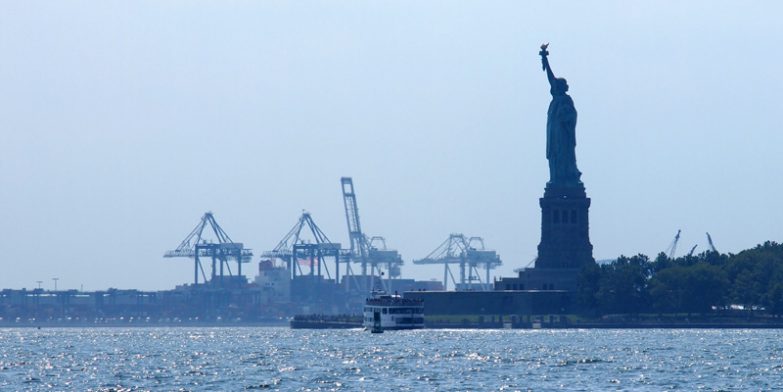
The spot rate spread from Asia to the US West and East coasts has reached its widest point in nearly two years, driven by capacity increases to the West Coast and rising concerns over a potential strike by 45,000 dockworker members of the International Longshoremen’s Association (ILA) on the East and Gulf coasts.
Capacity issues on the West Coast began to alleviate in early July, following the launch and reintroduction of at least 10 services. This has widened the differential between East and West coast rates, with East Coast rates now nearly 50% higher—the largest gap since October 2022.
However, East Coast spot rates may soften in the second half of August, as merchandise imports must depart Asian ports by mid-August to reach US store shelves in time for Black Friday, with importers rushing to avoid potential disruption caused by the ILA strike, with the current contract set to expire on 30th September.
Growing Threat of an ILA Strike
Reports indicate that the ILA is seeking an almost 80% wage increase over its next six-year contract with maritime employers on the East and Gulf coasts. The union has issued a 60-day strike notice to the United States Maritime Alliance (USMX), signalling its readiness to strike if a new labour deal is not agreed upon before the current contract’s expiration on 30th September.
ILA locals from the East and Gulf coasts will convene in New Jersey during the first week of September to review wage demands and plan strike strategies if their conditions are not met. ILA President Harold Daggett has vowed that members will not work beyond the contract’s expiration, rejecting the current wage proposal as insufficient.
Surge in US Imports Looms
US imports from Asia have been climbing for 10 consecutive months, and there is no sign of a slowdown in the second half of the year. A surge in import volumes is expected in August as shipments are front-loaded ahead of potential ILA strikes. While analysts had predicted a tapering of imports during the traditional peak season from August to October, the Global Port Tracker has revised its forecast, now expecting year-over-year increases in monthly imports through the end of 2024.
East Coast spot rates are expected to soften in the second half of August because merchandise imports to the East and Gulf coasts must depart Asian load ports by mid-August to reach store shelves in time for Black Friday sales on the day after Thanksgiving.
Also, because the voyage time from Asia to the East and Gulf coasts is about 30 days, retailers and other importers who wish to ensure they are not caught up in a potential ILA strike are rushing to book their shipments by mid-August, with the ILA’s existing contract expiring at the end of September.
Despite trans-Atlantic import volumes growing 7% in H1 2024 spot rate levels have fallen steadily for months, with container shipping lines announcing peak season surcharges (PSSs) for there 1st September, in a bid to turn around declining westbound spot rate levels.
It is also worth noting that carriers that were looking for long-term trans-Atlantic deals, are now stipulating that holding rates longer than a quarter might not be approved, which suggests they are being very bullish about the market’s short-term outlook.
Canadian Rail Strike May Be Imminent
A rail strike in Canada is imminent as the Teamsters Canada Rail Conference (TCRC) and rail operators Canadian National (CN) and Canadian Pacific Kansas City (CPKC) struggle to reach an agreement. Both CN and CPKC have issued lockout notices for August 22nd and have begun phased shutdowns, halting hazardous material shipments and imposing embargoes on intermodal cargo. The Canadian government has refused to intervene in the negotiations, despite CN’s request for binding arbitration. The Canada Industrial Relations Board ruled that rail services are not essential, which allowed the strike to proceed after a cooling-off period.
The impact of the strike is expected to be severe, especially at the Port of Vancouver, which is already grappling with a backlog of 13,000 intermodal containers. The port, which heavily relies on rail connections, may become congested quickly without regular train services. CN’s phased shutdown includes extending embargoes to cargo moving between the U.S. and Canada, and cross-border operations with CSX have already been halted. The union has expressed willingness to continue bargaining with the rail operators, though negotiations remain far from resolution.
Airfreight Under Pressure
Rising import volumes are expected to lead to a significant spike in airfreight demand if port strikes occur. The airfreight sector is already under pressure from heightened eCommerce demand, driven by Chinese platforms like Shein and Temu. Shein alone accounts for about 20% of global fast-fashion sales, putting considerable strain on available air capacity into the US. An ILA strike would likely exacerbate the situation, with an influx of ‘distressed’ cargo needing expedited transport, further constraining airfreight capacity.
If you have any concerns about the issues raised in this article, we can review your situation, explain your options and, if necessary, consider contingency plans.
Global Forwarding USA has a dedicated import and export department, that handle ocean, air and customs brokerage – including all related customs departments – with domestic transport for container movements, LTL and FTL.
EMAIL Adam Davies, Global Forwarding USA, Vice President.





